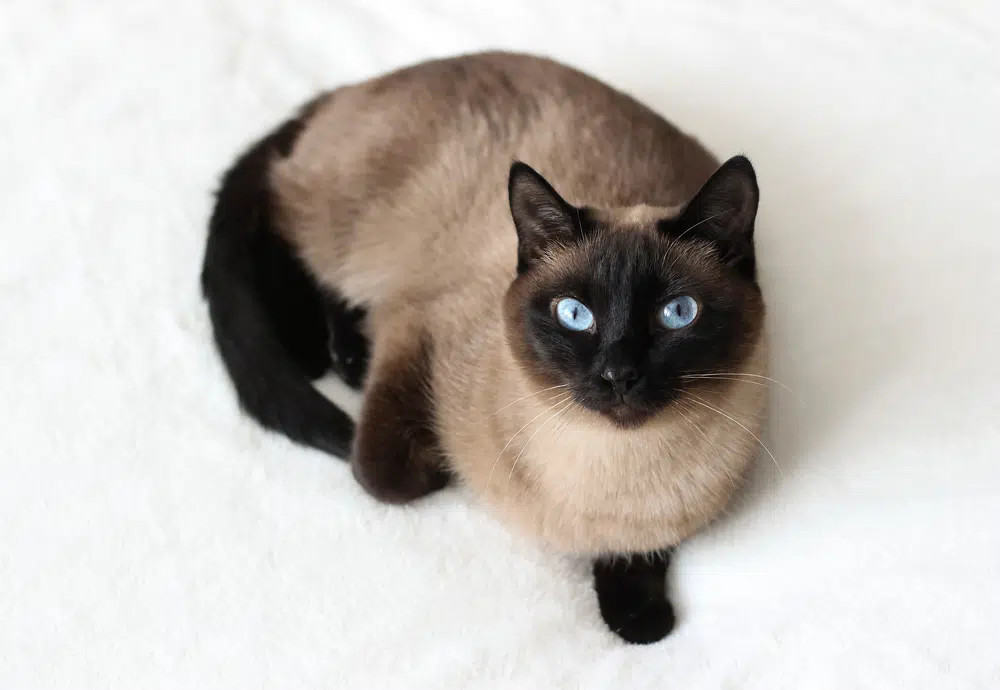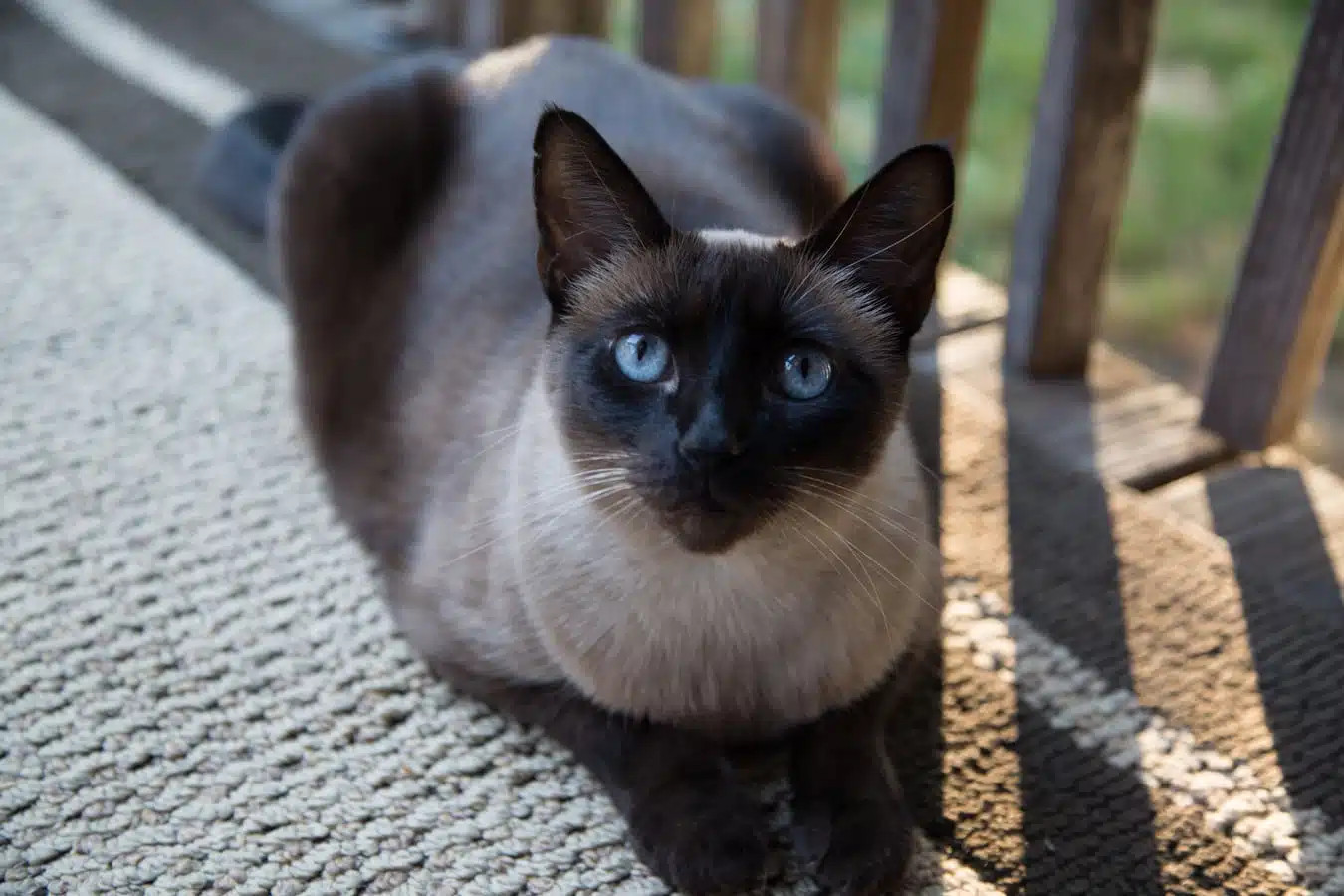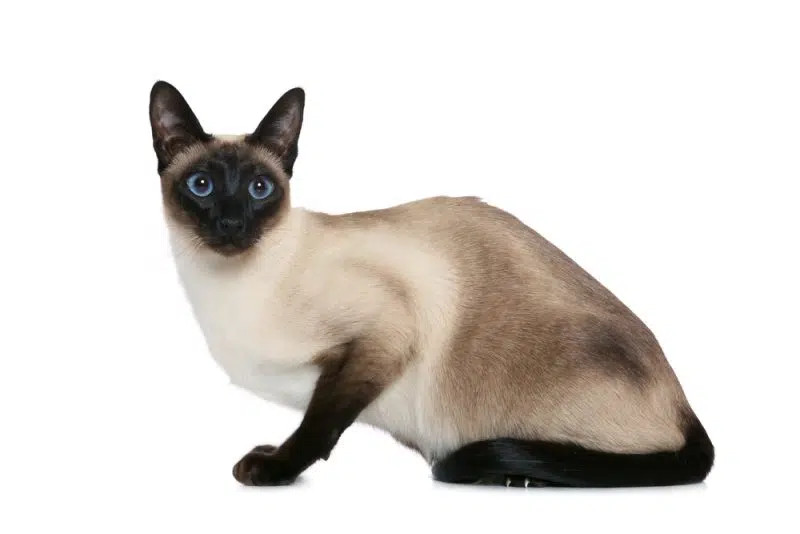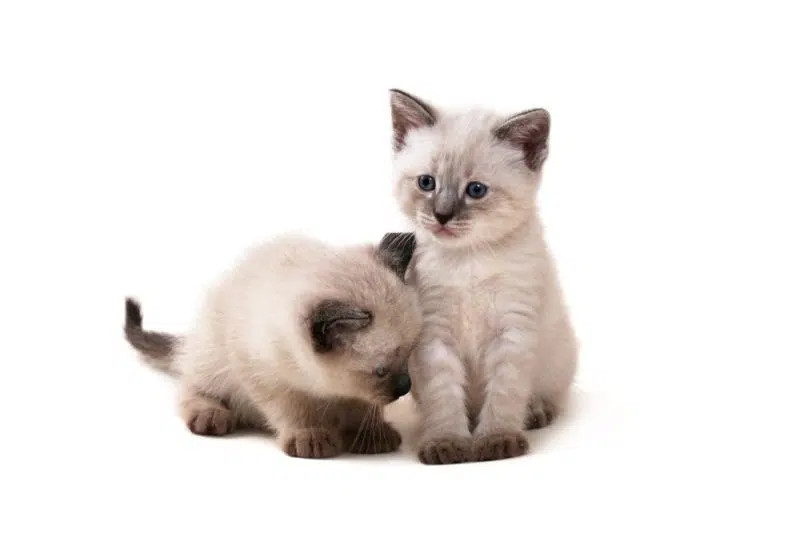Seal Point Cats, with their captivating contrast of light bodies and dark extremities, are undeniably striking felines. Often admired for their elegance and distinctive appearance, they sometimes get mistaken for chocolate points. However, the seal point cat boasts a unique charm, characterized by dark brown to brownish-black points against an ivory, cream, or light fawn coat.
Beyond their aesthetic appeal, seal point cats possess a rich tapestry of genetics, history, and cultural significance. This article delves into eight fascinating facts about these remarkable cats, offering a deeper understanding of what makes them so special.
8 Key Traits to Admire About Seal Point Cats
1. Seal Point Isn’t a Breed, But a Stunning Coat Pattern
It’s crucial to understand that “seal point” refers to a specific coat coloration rather than a standalone cat breed. This beautiful pattern can grace several breeds, each with its own unique personality and physical characteristics. While the Seal Point Siamese cat is perhaps the most iconic example, numerous other breeds can exhibit this striking pointed pattern. These include the luxurious Himalayan, the playful Tonkinese, the curious Burmese, the sleek Colorpoint Shorthair, the elegant Thai, the agile Javanese, the gentle Ragdoll, and the graceful Balinese.
Image Credit: Seal point Siamese domestic cat with classic pointed pattern
2. Temperature Plays a Magical Role in Their Pointed Coats
The distinctive pointed coloration in Seal Point Siamese cats, and other pointed breeds, is a fascinating result of the Himalayan gene, a recessive genetic trait inherited from both parents. This gene isn’t just responsible for their striking points; it also dictates their mesmerizing blue eyes and the unique temperature sensitivity of their coat color. A Seal Point kitten enters the world with a predominantly white or creamy coat, a consequence of the consistent warmth of the womb, approximately 101 degrees Fahrenheit.
However, after birth, a remarkable transformation begins. The mutated enzyme tyrosinase, encoded by the Himalayan gene, springs into action. It activates melanin production – the pigment responsible for dark brown to black hues – specifically in the cooler areas of the body, namely the extremities. As a seal point kitten matures, you’ll witness their points gradually darken, a beautiful testament to this temperature-sensitive genetic process.
 Newborn-kittens being nursed by mother cat
Newborn-kittens being nursed by mother cat
Image Credit: Newborn seal point kittens nursing, showing their initially light coats.
3. Pointed Coloration: A Form of Temperature-Sensitive Albinism
The very gene that orchestrates the temperature sensitivity and color shifts in pointed cats is actually a fascinating variant of albinism. Therefore, cats with this pointed coloration are sometimes scientifically described as “temperature-sensitive albinos.” This doesn’t imply they are albino in the traditional sense, but rather that their color expression is linked to temperature, a characteristic shared with certain forms of albinism.
 Thai Siamese point cat with blue eyes
Thai Siamese point cat with blue eyes
Image Credit: Elegant Thai seal point cat showcasing blue eyes, a trait linked to pointed coloration.
4. Seasonal Shifts Can Influence a Seal Point Cat’s Shade
Given the temperature-sensitive nature of their coats, you might observe subtle yet noticeable changes in your seal point cat’s coloration as the seasons change. In warmer climates or summer months, their overall coat may appear lighter. Conversely, during colder seasons, the points and even their body coat can deepen in color. This phenomenon is directly related to how ambient temperature affects your cat’s core body temperature and, consequently, melanin production in their extremities.
 seal-point siamese cat
seal-point siamese cat
Image Credit: Adult seal point Siamese cat, coat color can vary with temperature.
5. Siamese Ancestry: Revered Figures in Ancient Siam
The origins of Siamese cats, renowned for their seal point variations, trace back to Thailand, formerly known as Siam. Their significance is deeply rooted in Thai history and culture, with depictions appearing in the Tamra Maew, or Cat-Book Poems, ancient Thai manuscripts potentially dating back to the 14th century. In Siam, these cats were not merely pets; they were revered. Legend held that upon the passing of royalty, a Siamese cat would become the vessel for their soul. Consequently, only royal families were permitted to own Siamese cats, and they were often kept in temples as spiritual guardians, highlighting their esteemed status.
Image Credit: Young seal point Siamese cat with a regal bearing, reflecting their historical reverence.
6. The Thai Cat: The Forerunner to the Modern Siamese
The slender, wedge-headed Siamese cat with large ears, instantly recognizable today, is actually a modern interpretation. It evolved from, and is closely related to, the Thai cat. The Thai cat, sometimes called the “Old-Style Siamese,” “Applehead Siamese,” or “Traditional Siamese,” represents an earlier form of the breed.
The key distinction lies in their physical appearance. The Thai cat exhibits a more rounded overall conformation, both in facial features and body shape. In contrast, the modern Siamese has been selectively bred for a more triangular head, refined and slender physique, and a lean yet muscular and athletic build. Both types, however, can display the beautiful seal point coloration.
 Old-style Siamese cat on white background
Old-style Siamese cat on white background
Image Credit: Old-style Thai cat, the traditional Siamese breed, also displaying seal point.
7. Points Expand Beyond Seal: A Spectrum of Colors
While seal point is a classic and widely recognized pointed color, the world of pointed cats encompasses a delightful array of shades. For Siamese cats registered with the Cat Fanciers’ Association (CFA), accepted point colors, in addition to seal, include the delicate lilac, the soft blue, and the rich chocolate point. However, the genetic possibilities extend even further.
Other point colors that can grace Siamese cats and various pointed breeds include the warm red and cream, the subtle cinnamon and apricot, the muted caramel, the patterned tortie (tortoiseshell), and the distinctive lynx or tabby point patterns. This wide spectrum of colors adds to the diversity and allure of pointed cats.
 Two Siamese kittens playing
Two Siamese kittens playing
Image Credit: Playful seal point Siamese kittens, points come in various colors.
8. Affectionate by Nature: A Hallmark of Pointed Breeds
While feline personalities are ultimately individual, certain pointed breeds are renowned for their affectionate and people-oriented temperaments. Breeds like the Siamese, Ragdoll, Burmese, and Birman are frequently cited for their loving natures.
Some, like the Siamese, are known for their vocalizations and outgoing personalities, often forming strong bonds with their human families and eagerly following them around. Others, such as the Ragdoll, are famed for their docile, relaxed, and exceptionally sweet dispositions, living up to their name by often going limp when held. This general tendency towards affection makes seal point cats, across various breeds, wonderful companions.
Image Credit: Expressive seal point Siamese cat, known for their affectionate nature.
In Conclusion: The Endearing Appeal of Seal Point Cats
Seal point cats stand out as some of the most visually captivating and easily recognizable felines. However, their charm extends far beyond their striking appearance. If you’re considering adding a loving and intriguing cat to your life, exploring local animal shelters and rescue organizations is a wonderful idea. Many cats of all types, including those with the beautiful seal point coloration, are waiting for their forever homes and might just be the perfect affectionate companion you’re searching for.
Related Reads:
Sources:
Featured Image Credit: Andreas Lischka, Pixabay

